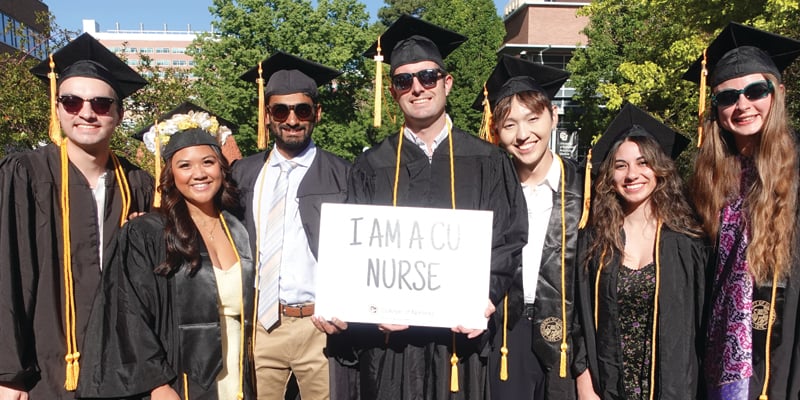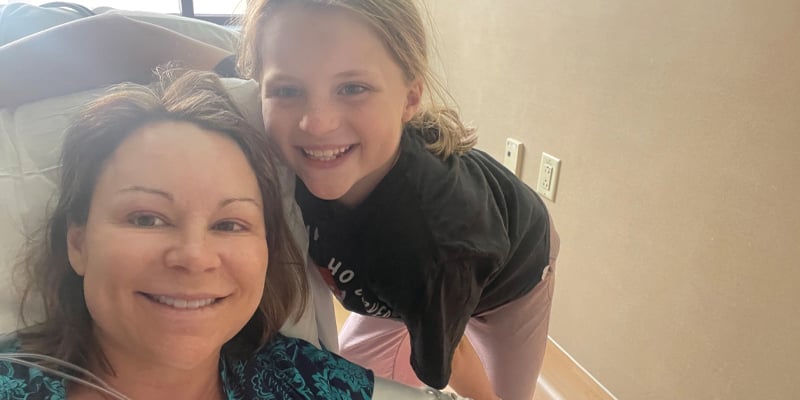A faceless angel with long dark hair glides toward heaven in a sky of blue and green leaving sparks of light in her wake. Hundreds of folded paper cranes in the shape of a flower, poetry, time capsules and musical compositions – comprise an exhibit of the human spirit. The exhibition, Seen and Heard – The Sacred Stories of Pediatric Nurses During the Pandemic, is part of a study that examined what 30 pediatric nurses experienced during 15 of the worst months of COVID-19.
For Children’s Hospital Colorado Nurse Scientist and CU Nursing Assistant Professor Lindsey Tarasenko, PhD, RN, the principal investigator of the study, “I hope that when people attend the exhibit, they can truly step into someone else’s shoes, understand what nurses have been through, and have a visceral experience. There are beautiful stories and moments of hope and joy. There are also more oppressive pieces depicting challenges and grief. It is a collection of the human experience and shows something beautiful about nurses in general; their commitment, strength, and agility.”
The exhibition will be on display at the University of Colorado College of Nursing May 12 and May 13 from 4:30 p.m. to 8:15 p.m. Please register for this free event.
Research to art
The 37 works of art are the culmination of a longitudinal social science case study by a group of nurse scientists. They chose to study pediatric nurses because they have been an underrepresented population in the literature. Researchers also wanted to capture the comprehensive role of nursing, in addition to providing medical care, during a global pandemic.
Investigators collected hospital electronic correspondence pertaining to nursing practice changes, state COVID-19 rates, factored in national and local events, and conducted two in-depth interviews of pediatric nurses between January 2020 and March 2021. Then, researchers took it one step further to capture the full experience. They asked the nurses to create and anonymously submit a work of art that expressed their experience.
“Once you hear the stories associated with the art, they are profound and very emotional. There is no higher honor than getting to know someone's story and understanding where they have been. It has been an opportunity to nurture and honor nurses,” Dr. Tarasenko says. “It has made me want to incorporate art into future studies because it is a means for nurses to professionally reflect and advocate for themselves, and their patients and practice.”
Seeing humanity
The study found the more involved nurses are in their practice, the more they feel valued and satisfied with their work. The converse is also true. It found that interviews and artwork gave nurses a safe and cathartic way to reflect and express their experiences. During the pandemic, the nurses produced creative solutions and brought humanity to their care to meet the needs of others.
“The stories are so deep and personal,” says co-investigator Lori Gdanetz, PhD, RN, PCCN, associate director and assistant professor at Gannon University Villa Maria School of Nursing. “I am truly grateful for the uniqueness of this research team and that we are allowing ourselves to be vulnerable and use art as a way to express our experience from the research side. Because it was pretty powerful.”
The researchers also created artwork.
Beyond what you can see
When the study began, Dr. Tarasenko received two powerful pieces of news: she was pregnant and has a disease causing blindness. One of Tarasenko’s submissions is a fluorescein angiogram image of her right eye. Titled Know Me Beyond What You Can See is about her diagnosis.
“The white vessels are healthy. The black vessels are damaged from inflammation; the light around the vessels is fluid leaking out. I have lost about half my vision in my right eye,” she says. “It was devastating to learn this at the same time of my pregnancy. That is where I learned that joy and grief can coexist, and that vulnerabilities can lean into strength and purpose.”
“Ironically, this vision loss has allowed me to see. Had this not happened, I might have looked at this study differently. Our participants shared deep, personal challenges they were going through with professional identity, social tribulations, and personal health issues, and I felt like I was living right alongside them. Because this happened to me, it allowed me to be receptive and to really see them and their humanity. We're not just nurses responding to a pandemic, we're human beings also dealing with our own complexities, our own joys, and our own griefs. This study created community to support one another, heal, and grow.”
See Me
Dr. Gdanetz painted three acrylic paintings including Faceless Angel, Rising from the Darkness and See Me. “The deeper part of See Me is that nurses came to work every day and showed up. That is why there are unique, beautiful colors. They are bright, they are vibrant, they’re connected,” says Gdanetz. “Then, I blacked it all out. That was metaphorical for the nurses having to put masks on and feeling isolated. Then I scraped the black off layer by layer until the colors emerged again. It means ‘See me, I am a nurse. I know what to do in this situation. See me, trust me, allow me to be.’”
Everything Except
College of Nursing Research Assistant Nadia Shive wrote a poem called Everything Except that gets interrupted by noise and chaos, drowning out the nurse.
“The poem is a dialogue between nurses, who are serving others and trying to be heard. We celebrated nurses during the pandemic, but I think we also saw them as a bottomless resource. That is not the case,” says Shive, BA, CCRC. “I hope what people take away is remembering that beneath all of this, nurses are human, too, and we need to fill their cups and nurture their humanity, so they can continue to care for us and give of themselves.”
Wilted Flowers
The design with more than 50 folded paper cranes was created by Figaro Loresto, PhD, RN. He named the mixed media after a quote from a TV show he watched during the pandemic about a basketball team. Sometimes it is the Flower Wilted by Rain that Moves Our Hearts the Most. On the pallet, a yellow flower withstands a rainstorm.
“This piece is about how we are not defined by our hurt; we are not defined by our grief. We still have value; we still have worth,” said Loresto, nurse scientist at Children’s Hospital Colorado, and assistant professor at the University of Colorado College of Nursing. “Even in the presence of grief and pain, you have to remember that you are still a flower. A flower is a symbol of love and joy.”
Seen and Heard – The Sacred Stories of Pediatric Nurses During the Pandemic, will be on display at the CU College of Nursing on the Anschutz Medical Campus, May 12 and May 13, from 4:30 p.m. to 8:15 p.m.
There will be the opportunity to view the art, tour the College's history center, and meet the research team.
Featured Art Work
Art Piece: Dance Macabre, 2021
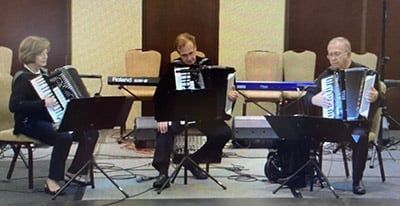
Dance Macabre, 2021 |
Musical composition by Camille Saint-Saëns in 1874 played on accordion by Madalynn Neu, PhD, RN, FAAN, co-investigator and associate professor at the University of Colorado College of Nursing and nurse scientist at Children’s Hospital Colorado. The trio includes John Neu and Larry Miller.
Author’s Notes:
According to legend, death appears at midnight on Halloween and calls to the dead to dance while he plays the fiddle. The story follows the skeleton’s dancing until dawn breaks and the graves are filled again for another year. To me, it well depicts the COVID experience. The opening of the piece represents the forewarning of COVID in January, 2020. Then the music becomes a little more sinister reminding me of the beginning of COVID in March, 2020. When the lively dance begins, I imagine the viruses gleefully infecting people and creating havoc. The liveliness mellows somewhat in the middle of the piece as the viruses take some relaxation time as did mortality and infection rates during the summer. This is followed by a steady increase in volume and intensity that was the surge of COVID in the Fall. The loud boom at the end of the surge is the entrance of the vaccine. The music gradually calms as the viruses either become less virulent or are entirely subdued.
Art Piece: Everything Except, 2021
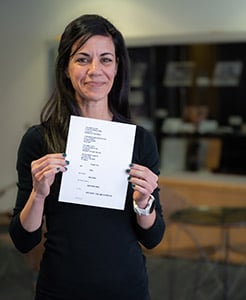
Everything Except |
Poem by Nadia Shive, BA, CCRC, professional research assistant at the University of Colorado College of Nursing.
Author’s Notes:
The first part of “Everything Except” uses visuals found in nature to describe needs and altruism. These are representations of nurses, stepping into necessary embodiments to provide help and meet needs. The poem then becomes a simple dialogue in which the nurses, their efforts finally acknowledged, try to advocate for themselves. But they are interrupted by a pinging sound, which represents call bells, floor phones, and even social media, their ultimate request being met with silence.
In speaking with participants and reading interviews from the study, I was struck by the wide range of human experiences expressed by each nurse – pride, fear, gratitude, anger, joy, fatigue. Just as striking was how often they expressed (and we, as a society, observed them) being unheard and underappreciated during the pandemic. Seen as a bottomless resource. With this poem, I wanted to capture nurses’ beautiful dedication to meeting the needs of other humans, while shedding light on the fact that their humanity must be respected and nurtured in order for them to provide such care.
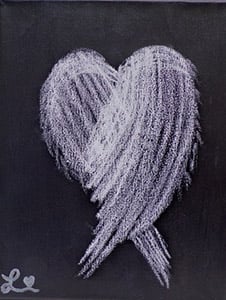
Rising from the Darkness |
Art piece: Rising from the Darkness, 2021
The Acrylic and oil pastel was created by Lori Gdanetz, PhD, RN, PCCN, co-investigator and associate director and assistant professor at Gannon University Villa Maria School of Nursing.
Author’s Notes:
The world is full of darkness, sadness, and isolation.
Arising from the darkness is the love carried inside of each of us.
Let it come...
Let it be...
Let it go...
I cannot fix what is going on...I can love...I can listen to your story...I can hold you in my heart
You are “RISING from the DARKNESS”
Art Piece: Through Vulnerability We Find Courage to Transform, 2021
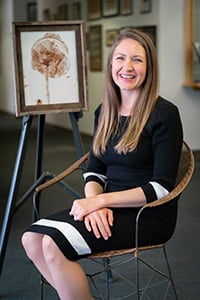
Through Vulnerability We Find Courage to Transform |
This placenta art was created by principal investigator Lindsey Tarasenko, PhD, RN, nurse scientist at Children’s Hospital Colorado and assistant professor University of Colorado College of Nursing. Dr. Tarasenko got pregnant and delivered her daughter during the course of the study.
Author’s Notes:
This piece represents nurses’ vulnerability during the response to the pandemic and demonstrates the ability of nurses to use courage and informed thoughtful action to overcome the challenges to transform and root into their identity. It is within nurses’ identity, that purpose is found in advocacy, fostering authentic relationships and the profession of a therapeutic presence to facilitate healing in themselves and others. This piece represents the sacredness of the human condition and urges individuals and organized systems to see and honor the humanity of nurses as they care for patients and other persons in their lives.
Art piece: Sometimes It Is the Flower Wilted by Rain that Moves Our Hearts the Most, 2021
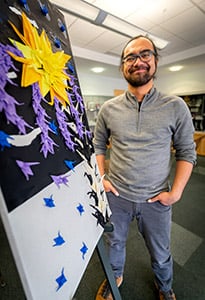
Sometimes It Is the Flower Wilted by Rain that Moves Our Hearts the Most |
Mixed media by Figaro Loresto, Phd, RN, co-investigator and nurse scientist at Children’s Hospital Colorado and assistant professor at the University of Colorado College of Nursing.
Author’s Notes:
Flower, the rain wilts
Hurt, darkness, grief – shapes and morphs
But…still…a flower
Research To Art – How They Did It
Charts. Bullet points. Data demonstrated through often complicated graphics. But not this study by creative researchers. They added a new dimension to the data and brought meaning to the numbers with works of art created by the pediatric nurses and researchers. When words failed to fully express what the nurses endured, researchers found their artwork tugs at heartstrings, causes the mind to pause and consider, and the breath to catch. The art makes people to feel the experience, and hopefully, remember it.

See full image visual.
In addition to forms of creative expression, researchers gathered state COVID rates, time-lined local and national events, asked nurses to sit down and freely talk about what they were feeling, and analyzed hospital emails. The combination of methods allowed the researchers to triangulate the experience for a trustworthy study.
The methodologies they used are social network analysis and text mining.
“In utilizing social network analysis, we tied people’s experiences together through what they said in their interview transcripts. We ran an algorithm and connected it with demographics to show that certain groups of nurses had certain themes in what was top of mind for them. Also, we saw that nursing leaders had different concerns and priorities. What they were prioritizing was different than the nurses at bedside – all equally stressful, but different,” said Figaro Loresto, PhD, RN, nurse scientist at Children’s Hospital Colorado and assistant professor at the University of Colorado College of Nursing.
Loresto says the transcripts show nurses were most concerned about their patients, while their bosses were more worried about the nurses, the practice and the patients. Further, using five quarters of email data, researchers noted how the correspondence changed over time from chaotic at the beginning with lots of new information and changes to eventually, a routine practice with fewer correspondence.
Researchers also factored in socio-political events like the Black Lives Matter movement, the presidential election and Colorado wildfires along with the surges and plunges of infections to document the nursing profession’s response.
The new methods have allowed the researchers to draw new insights from the data which will help them move the profession forward through future pandemics.



